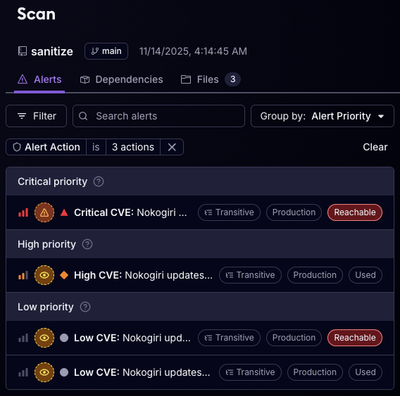
Product
Announcing Bun and vlt Support in Socket
Bringing supply chain security to the next generation of JavaScript package managers
@department-of-veterans-affairs/caseflow-frontend-toolkit
Advanced tools
Build tools and React components for the Caseflow frontends
Build tools and React components for the Caseflow frontends.
$ yarn add @department-of-veterans-affairs/caseflow-frontend-toolkit
See how other libraries, like Caseflow, are using this tool.
The components make assumptions, like:
These assumptions are not explicitly documented, so you'll have to read the code. :)
This module has many peer dependencies. It relies on contracts with a variety of modules in the Webpack, React, and Karma ecosystems. Unfortunately, yarn and npm's support for peerDependencies is weak. For instance, adding peer dependencies can cause yarn to log warnings for no reason. This means that you'll have to just look in package.json for what seems relevant, and manually add it to your consumer project.
This module has the public contract that consumers can require certain files in config/, test/ and components/ directly. Before you move files around, be sure that no consumer is using them. (We can come up with a more formal way to declare what files are public when the usage of this module gets more complex, but for now I'd say it's overkill.)
Traditionally, an npm module is supposed to own its build process. Before running yarn publish, you'd have a script that compiles a JS file that does not need further compilation to run in any environment you support. This greatly simplifies sharing code in the broad OSS world, because you don't need to know how a module was compiled to use it.
For our use case, I've decided to forgo that. Our team owns both this module and the consumers of it. In the near term, we have two consumers. Additionally, the build process for those two consumers is defined by this module itself. So it should be easy to keep all three places in sync. And this allows us to greatly simplify our publishing process. Instead of having Travis publish on master builds, or hoping that people remember to run yarn run build-and-publish instead of just yarn publish, we can just publish directly without extra steps. We won't have the pain of accidentally publishing a version that does not have the prebuilt JS file.
Unfortunately, if react is listed as a dependency in package.json, then yarn fires a bunch of erroneous warnings about react not being met as a peer dependency. Thus, we move it to devDependencies to silence the warnings. Semantically, react is a dependency of this module and should be listed as such.
FAQs
Build tools and React components for the Caseflow frontends
We found that @department-of-veterans-affairs/caseflow-frontend-toolkit demonstrated a not healthy version release cadence and project activity because the last version was released a year ago. It has 8 open source maintainers collaborating on the project.
Did you know?

Socket for GitHub automatically highlights issues in each pull request and monitors the health of all your open source dependencies. Discover the contents of your packages and block harmful activity before you install or update your dependencies.

Product
Bringing supply chain security to the next generation of JavaScript package managers

Product
A safer, faster way to eliminate vulnerabilities without updating dependencies

Product
Reachability analysis for Ruby is now in beta, helping teams identify which vulnerabilities are truly exploitable in their applications.